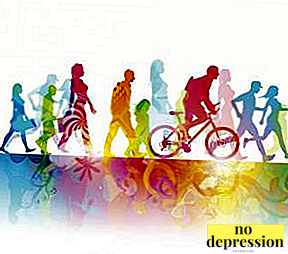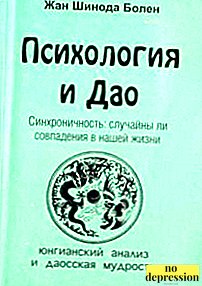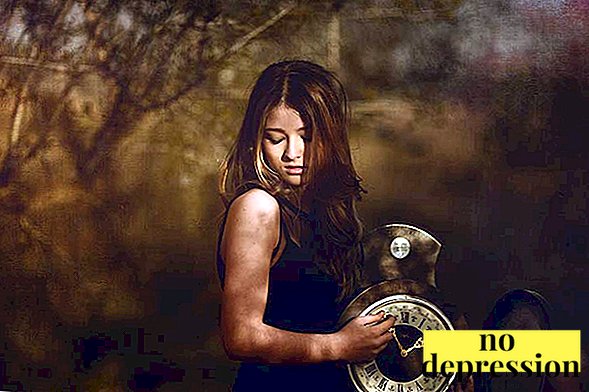Fear of holes and holes refers to specific phobias, which, despite its sufficient prevalence, is not recognized as a disease and causes numerous disputes among specialists.
The emergence of such a pathological condition is accompanied by a feeling of disgust and fear at the sight of certain objects.
Symptom intensity can reach critical level. The type of cluster holes provokes a state typical of phobias in the person, up to a panic attack and loss of consciousness.
What is the name of?
Fear of holes and holes in medical practice is called "tripophobia".
This pathology is among the poorly studied phobic states. The first symptoms of phobias can occur at any age.
The etiology of tripophobia can remain unexplained but in most cases its occurrence is associated with certain events in a person’s life, after which holes and holes begin to be perceived as potential sources of danger.
Features tripophobia:
- Any objects that have in their structure clustered (repeated) holes cause tripophobia significant discomfort in the form of physiological and emotional symptoms.
- Tripophobia is a fear of multiple openings, but in severe cases phobic symptoms are triggered by one hole (for example, hollows in a tree).
- Stand out three degrees tripophobia (with mild nervousness and anxiety are mild, the average degree is accompanied by convulsive states and discomfort in the chest, in severe phobias there is a lack of motor coordination and disorientation in space).
You can learn about tripophobia from the video. Impressive not to look!
What is expressed?
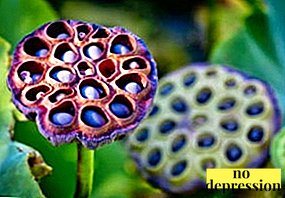 Tripophobia is expressed as a negative reaction when a lot of holes and holes.
Tripophobia is expressed as a negative reaction when a lot of holes and holes.
At the same time, a person has not only aversion and a feeling of fear, but also an obsessive desire to examine an object.
To provoke a panic attack can any items, resembling holes, including food, images, surrounding objects.
Severe phobias can be combined with hallucinations. At the same time, a picture appears in the mind of a person that does not correspond to reality and causes an attack of disgust and horror in it.
The following can provoke a panic attack irritants:
- round holes in the soil;
- cheese with small holes;
- washcloths or scouring pads;
- traces of worms and caterpillars;
- porous chocolate;
- anthills;
- graphic images;
- enlarged pores on the skin;
- smallpox pits;
- other holes and holes.
Probable causes
In most cases etiology of tripophobia remains unexplained.
Many small holes and holes cause panophobic panic fear, but it cannot explain its occurrence.
At the sight of the stimulus appears feeling of disgust, anticipation of potential danger or anxiety. In some cases, the type of holes resembles specific objects or situations that left negative memories.
The possible causes of phobias include the following factors:
- Insect bites (for example, if a bee sting caused severe stress to a child, then, looking at the honeycomb, a feeling of fear will be formed on a subconscious level).
- Fear of insects and their penetration under the skin (in medical practice there were cases when patients had visual hallucinations, from various holes on the skin different types of insects appeared).
- Childhood fears (if a child perceives holes and holes as a potential hazard, for example, after watching a movie or on the basis of his own fantasies, then in adulthood such a factor can provoke a phobia).
- Hereditary factor (the predominant number of phobias has the ability to be transmitted at the genetic level, tripophobia is no exception).
- At particular risk are people with obsessive compulsive disorders (these patients tend to obsessive images, getting rid of which becomes difficult).
How does it manifest itself?
 Symptoms Tripophobia can occur not only in the form of certain objects, but also become obsessive states.
Symptoms Tripophobia can occur not only in the form of certain objects, but also become obsessive states.
The sight of frightening openings can disturb at night, occur suddenly and without cause.
Internal experiences are combined with physiological signs. Some triptyphobes experience the sensation of multiple holes. on your own body.
Tripophobia attack may be accompanied by the following conditions:
- the occurrence of itching of the skin;
- symptoms of tachycardia and increased heart rate;
- bouts of nausea (vomiting is possible);
- goose bumps on the skin;
- severe tremor of the limbs;
- increased sweating and chills;
- feeling of disgust;
- lack of coordination of movements;
- inability to look away from the object;
- involuntary muscle contractions;
- feeling of numbness and numbness in the body;
- headache and dizziness;
- propensity for apathy;
- pallor or redness of the skin;
- loss of consciousness (with critical deterioration).
Methods to overcome fear

In medical practice, tripophobia not classified as a disease.
This nuance explains the absence of specific treatment of a pathological condition.
To eliminate the feeling of fear of holes and holes, experts can use various psychotherapeutic techniques.
If a phobia has a negative effect on the psycho-emotional state of a person and provokes the risk of developing mental disorders, then the use of drug therapy is acceptable.
Psychotherapeutic effect
Psychotherapy is the main treatment for the disease. Psychologists and psychotherapists use traditional methods of therapyapplied to most phobias.
The main task of specialists is to eliminate the feeling of fear at the sight of the holes and to replace the negative reaction with positive emotions. This effect is achieved with the help of various psychotherapeutic techniques.
Psychotherapeutic methods:
- Psychoanalysis method (identification of the phobia object, the reasons for its occurrence and the search for ways to eliminate the negative reaction of the body)
- Hypnosis (the impact on the patient occurs at the subconscious level, experts try to develop positive emotions from tripofoba when they see certain objects in a state of hypnosis).
 Substitution Correction (During the session, tripophobia shows pictures with different emotional colors, images of nature alternate with objects that cause negative reactions, the body does not have time to experience a feeling of disgust and fear, gradually this state becomes fixed).
Substitution Correction (During the session, tripophobia shows pictures with different emotional colors, images of nature alternate with objects that cause negative reactions, the body does not have time to experience a feeling of disgust and fear, gradually this state becomes fixed).- Breathing exercises and muscle relaxation (these procedures have a positive effect on the psychoemotional state of tripofoba, strengthening the nervous system contributes to the development of emotional balance).
- Group therapy (special classes in which several people with identical phobias participate simultaneously).
- Cognitive therapy (the task of the method is to make the person’s fear understandable to him).
Pharmacological therapy
Drug therapy for tripophobia is used in rare cases. For the appointment of drugs requires the presence of serious psycho-emotional disorders.
For example, a critical sleep disorder, seizures panic attack or unruly aggressionas well as neurotic abnormalities. The course of treatment is prescribed individually.
The doctor objectively assesses the state of mind of tripophobe and determines the overall clinical picture of his state of health.
When treating tripophobia, the following can be used. drugs:
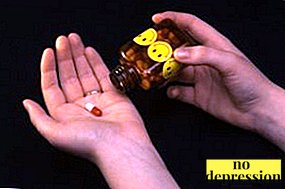 tranquilizers;
tranquilizers;- sedatives;
- sedatives;
- anticonvulsant medications;
- antihistamines (if the phobia is accompanied by allergic reactions);
- anti-inflammatory drugs (to eliminate the effects of scratching the skin);
- drugs of antidepressants group.
Recommendations
If you experience symptoms of tripophobia, you can try to cope with this condition. by myself. The cause of phobias are certain factors that are embedded in the human subconscious.
If independent attempts to get rid of the fear of holes and holes do not lead to the desired result, then you cannot avoid consulting with a specialist.
Otherwise, the symptoms of the phobia will begin to appear with a maximum degree of intensity.
Key recommendations:
- First of all, it is necessary to understand the nature of the phobia (perhaps, children's fears, insect bites or certain associations may have caused it.)
- You need to try to eliminate your fear (the awareness of the absence of danger will help to normalize the emotional reaction at the sight of an irritating object).
- The method of substitution correction can be reproduced independently (having made a selection from different images, regularly arrange specific trainings).
- When you see an object that causes a feeling of panic and disgust, you should try to present a pacifying picture (for example, the view of the sea, sky or forest).
- Tripophobia should definitely be treated (otherwise, a phobia can cause disruption of the musculoskeletal system, a tendency to migraines and hallucinations, and also provoke a number of psychological disorders).
To a small extent to tripophobia each person may be inclined. If we are talking about diseases that leave numerous scars on the skin, the appearance of fantastic creatures, on the skin of which there are numerous holes, then such objects cannot provoke positive emotions.
The alarm is the appearance of disgust or fear at the sight of objects that surround a person in everyday life (holes in food, a sponge for washing dishes, etc.). In the presence of such a condition, it is necessary to consult a psychologist or psychotherapist.

 Substitution Correction (During the session, tripophobia shows pictures with different emotional colors, images of nature alternate with objects that cause negative reactions, the body does not have time to experience a feeling of disgust and fear, gradually this state becomes fixed).
Substitution Correction (During the session, tripophobia shows pictures with different emotional colors, images of nature alternate with objects that cause negative reactions, the body does not have time to experience a feeling of disgust and fear, gradually this state becomes fixed). tranquilizers;
tranquilizers;